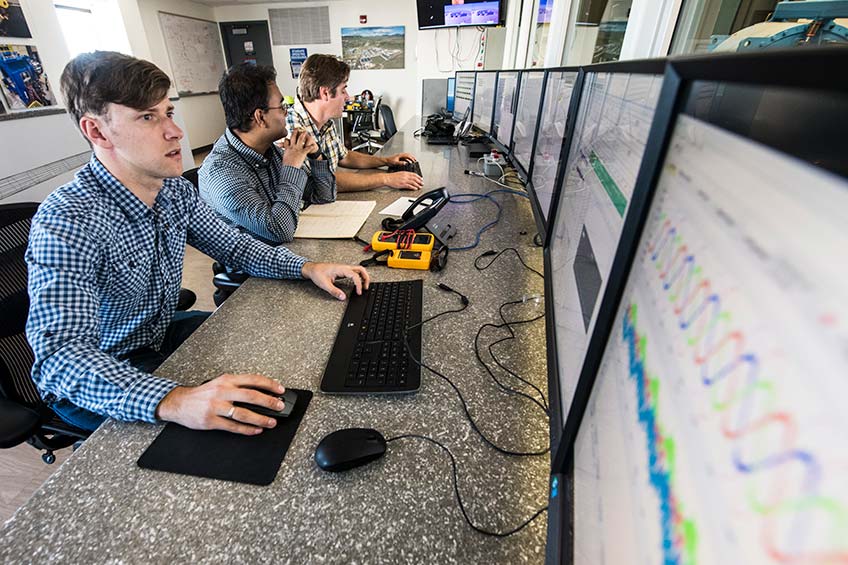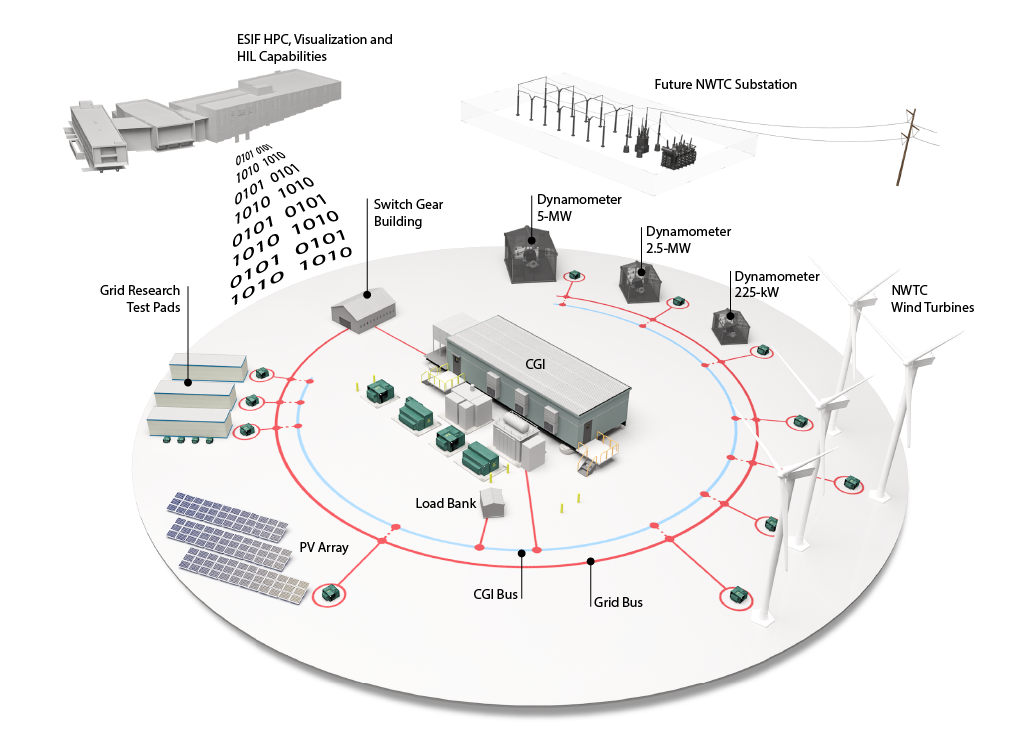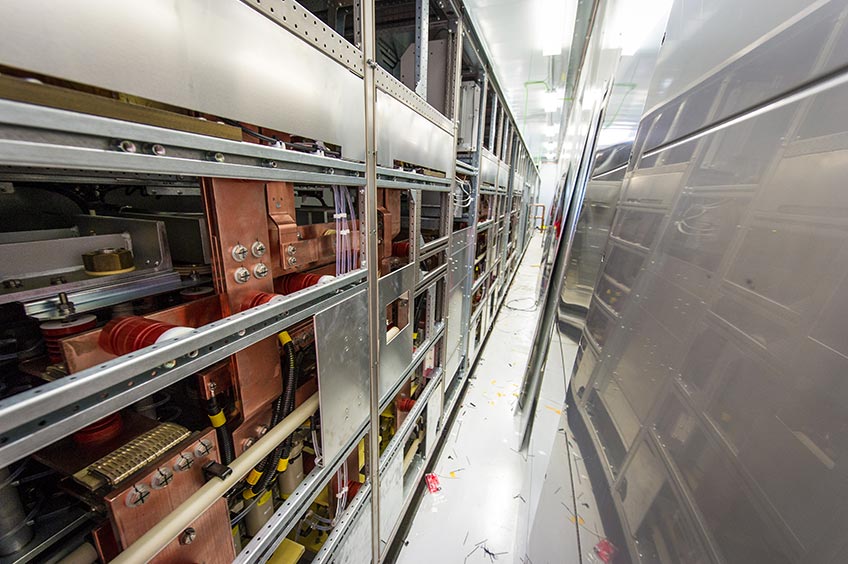Controllable Grid Interface
NREL's Controllable Grid Interface (CGI) can quickly and cost-effectively verify how wind turbines, photovoltaic inverters, and energy storage systems interact with the grid.
NREL's Flatirons Campus is one of two laboratorywide user facilities capable of analyzing the performance of megawatt-scale renewable energy systems at transmission-level voltages. As the first validation facility in the United States with fault simulation capabilities, NREL's CGI allows manufacturers and system operators to certify renewable systems in an offline, controlled environment. Combined with other assets available at NREL's Flatirons Campus, such as the motion platform, researchers can verify how their wind energy or water power device interacts with the grid or integrates with other technologies.

Grid Integration Validation
Through a connection with NREL's supercomputer (Eagle), NREL's CGI system is capable of visualizing complex energy systems in a virtual environment. This allows our researchers and partners to:
- Validate novel technologies at scale by simulating performance and integration with modern and future grids
Characterize device performance under conditions including steady, long-term operation and fast, dynamic, abnormal conditions - Refine simulation models for assets used in larger grid integration studies
- Verify compliance with standards and develop new validation methods that inform standardization bodies
- Leverage previously recorded data from various power systems or models to accurately produce inertial and primary-frequency response controls validation
- Validate new and advanced functions with demonstrations at scale.
Infrastructure and Hardware
NREL's 7-megavolt amperes CGI system has the ability to connect with our on-site 5- and 2.5-megawatt dynamometers, individual or multiple megawatt-scale field research turbines, a matrix of electronic and mechanical storage devices, a motion platform, and the Energy Systems Integration Facility.

See the Controllable Grid Interface fact sheet for additional technical characteristics associated with this system.
Data Acquisition and Results
NREL's grid integration researchers provide our partners with expertise in advanced grid concepts, including ancillary grid services, protection coordination, high-inverter penetration systems, and microgrids. We offer our partners access to:
- Balanced and unbalanced over- and undervoltage fault ridethrough evaluations
- Frequency response assessments
- Continuous operation under unbalanced voltage conditions
- Strong and weak grid condition simulations
- Reactive power, power factor, and voltage control validation
- Islanding operation
- Subsynchronous resonance conditions
- 50-hertz evaluations.
Impedance Measurement System
NREL has developed an impedance measurement system that is the first of its kind worldwide to characterize the electrical behavior of multi-megawatt wind turbines and inverters at different frequencies. The impedance measurement platform can help evaluate different dynamic stability problems, including sub-synchronous, super-synchronous, and near-synchronous resonance problems; serve as a platform for high-fidelity model validation; and support the development of new technologies such as grid-forming inverters and wind turbines.

Partner With Us
NREL's Flatirons Campus includes experimental laboratories, computer facilities for analytical work, tools and machine shops, office space for industry researchers, and space for assembling components and systems.
NREL offers a variety of ways for organizations to gain access to our wind technology expertise:
- Partner with us through technology partnership agreements.
- Participate in subcontracted wind research through solicitations and requests for proposals.
- Use our cutting-edge research facilities to develop and evaluate wind technologies.
Learn more about working with NREL, and partner with the water power or wind energy teams.
Learn more about NREL's wind energy facilities or water power facilities.
Share
